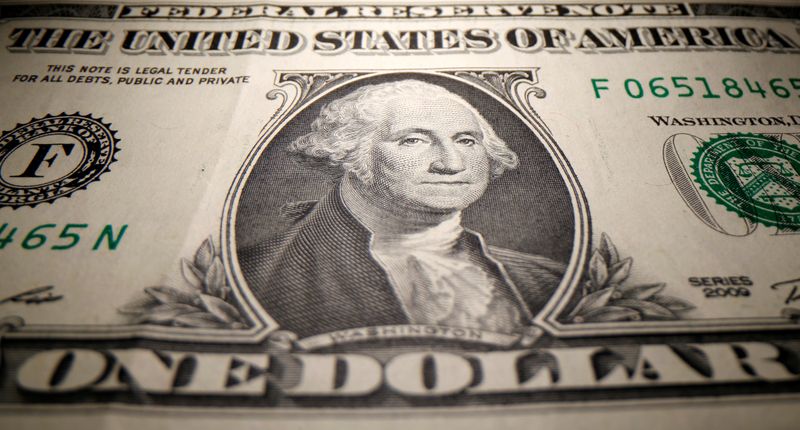By Gertrude Chavez-Dreyfuss
NEW YORK (Reuters) – The U.S. dollar fell against most currencies on Wednesday as investors perceived that Federal Reserve Chairman Jerome Powell’s statements after its two-day policy meeting suggested the U.S. central bank may be done raising interest rates.
The policy-setting Federal Open Market Committee (FOMC), as expected, left rates in the 5.25%-5.50% range where they have been since July. The Fed did not rule out another hike as it acknowledged the economy’s unexpected resilience despite its aggressive tightening launched more than a year ago.
But Powell’s remarks in his press briefing were laced with mixed messages that left investors doubtful that the Fed will raise interest rates again.
Powell said the Fed has a long way to go to get inflation to 2%, noting the resilience of economic data and demand for labor that could warrant further rate hikes. But he noted financial conditions have clearly tightened, and cited plenty of risks.
“The most notable takeaway from his comments was that the risks around whether policy is ‘sufficiently restrictive’ are much more balanced,” said Charlie Ripley, senior investment strategist for Allianz (ETR:ALVG) Investment Management in Minneapolis, by email.
“This signals that while there is a potential risk for the Fed to do more, the bar has become higher for rate hikes, and we are clearly seeing this play out with two consecutive meetings of no policy action from the Fed.”
The dollar index, which initially rose after the Fed statement, was last slightly down at 106.64. It has traded sideways since hitting an almost one-year high of 107.34 in early October on the back of a sharp rise U.S. bond yields driven by strong economic growth.
The Fed’s latest statement noted that with job gains still “strong” and inflation still “elevated,” the central bank continues to consider “the extent of additional policy firming that may be appropriate to return inflation to 2% over time.”
That said, U.S. rate futures have added to bets that the Fed is done raising its policy rate and will start cutting rates by June. Bets on a rate hike in December and January have been pared back to 19% and 30%, respectively, from 28% and 39% late on Tuesday.
“Powell had several opportunities to threaten another rate hike, but passed on most of them,” wrote Tom Simons, U.S. economist, in a research note after the Fed meeting.
“The answers to the questions from the press were consistent with the high level of uncertainty about the outlook, and about how much lagged tightening is still in the pipeline from previous moves.”
Against the yen, the dollar dropped 0.6% to 150.89. The currency pair typically tracks movements in U.S. two-year Treasury yields, which fell 11.5 basis points to 4.958.
The struggling yen has also gained, rising from a one-year low against the U.S. dollar and a 15-year trough versus the euro on threats of intervention from Japanese authorities, with more pointed-than-normal remarks from Japan’s top currency diplomat, Masato Kanda.
Wednesday’s data also showed slowing momentum for the world’s largest economy, putting the dollar on the defensive for parts of the session.
U.S. manufacturing contracted sharply in October after improving in prior months as new orders and employment slumped.
Data on U.S. private payrolls increased less than expected in October and wage growth moderated. Private payrolls rose by 113,000 jobs last month after gaining 89,000 in September, the ADP National Employment report showed.
In other currencies, the euro was last flat at $1.0570.
The dollar fell 0.3% versus the Swiss franc to 0.9079 francs.



